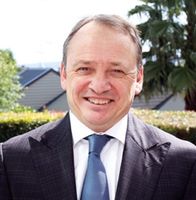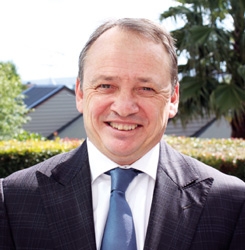Central Auckland, East Auckland, North Auckland, South Auckland, West Auckland > Private Hospitals & Specialists >
Mr Tim Tasman-Jones - Hand, Wrist & Elbow Surgeon
Private Service, Orthopaedics
Today
Description
- Wrist Arthroscopy - for further reading please click here.
- Reconstructive surgery of the carpus.
- Reconstructive surgery of the radius ulna - for further reading please click here.
- Ligament injuries of the wrist and elbow.
Consultants
-

Mr Tim Tasman-Jones
Orthopaedic Surgeon
Referral Expectations
You need to bring with you to your appointment:
Hours
| Mon – Fri | 8:00 AM – 4:30 PM |
|---|
Procedures / Treatments
Problems with the appearance or function of the hand can be the result of injury, birth defects or degenerative conditions. Arthritis Arthritis is a condition in which a joint and the surrounding tissue become swollen and painful. If surgery is necessary, it may involve replacement of the joint with an artificial joint or removal or repair of swollen or damaged tissue. Birth Abnormalities Surgery may sometimes be required for hand abnormalities that are present at birth such as too many or too few fingers, webbed fingers or joints that won’t bend. Carpal Tunnel Syndrome A pinched nerve in the wrist that causes tingling, numbness and pain in your hand may require surgery to make more room for the nerve. This operation is usually performed under local anaesthetic (the area being treated is numb but you are awake). Injuries Damage to tendons, nerves, joints and bones in the hand may require surgical repair. In some cases, tissue may be transferred from a healthy part of your body to the injured site (grafting). For further reading, please click here.
Problems with the appearance or function of the hand can be the result of injury, birth defects or degenerative conditions. Arthritis Arthritis is a condition in which a joint and the surrounding tissue become swollen and painful. If surgery is necessary, it may involve replacement of the joint with an artificial joint or removal or repair of swollen or damaged tissue. Birth Abnormalities Surgery may sometimes be required for hand abnormalities that are present at birth such as too many or too few fingers, webbed fingers or joints that won’t bend. Carpal Tunnel Syndrome A pinched nerve in the wrist that causes tingling, numbness and pain in your hand may require surgery to make more room for the nerve. This operation is usually performed under local anaesthetic (the area being treated is numb but you are awake). Injuries Damage to tendons, nerves, joints and bones in the hand may require surgical repair. In some cases, tissue may be transferred from a healthy part of your body to the injured site (grafting). For further reading, please click here.
Problems with the appearance or function of the hand can be the result of injury, birth defects or degenerative conditions.
Arthritis
Arthritis is a condition in which a joint and the surrounding tissue become swollen and painful. If surgery is necessary, it may involve replacement of the joint with an artificial joint or removal or repair of swollen or damaged tissue.
Birth Abnormalities
Surgery may sometimes be required for hand abnormalities that are present at birth such as too many or too few fingers, webbed fingers or joints that won’t bend.
Carpal Tunnel Syndrome
A pinched nerve in the wrist that causes tingling, numbness and pain in your hand may require surgery to make more room for the nerve. This operation is usually performed under local anaesthetic (the area being treated is numb but you are awake).
Injuries
Damage to tendons, nerves, joints and bones in the hand may require surgical repair. In some cases, tissue may be transferred from a healthy part of your body to the injured site (grafting).
For further reading, please click here.
For elderly patients joint replacement surgery is commonly required to treat damaged joints from wearing out, arthritis or other forms of joint disease including rheumatoid arthritis. In these procedures the damaged joint surface is removed and replaced with artificial surfaces normally made from metal (chromium cobalt alloy, titanium), plastic (high density polyethelene) or ceramic which act as alternate bearing surfaces for the damaged joint. These operations are major procedures which require the patient to be in hospital for several days and followed by a significant period of rehabilitation. The hospital has several ways of approaching the procedure for replacement and the specifics for the procedure will be covered at the time of assessment and booking of surgery. Occasionally blood transfusions are required; if you have some concerns raise this with your surgeon during consultation.
For elderly patients joint replacement surgery is commonly required to treat damaged joints from wearing out, arthritis or other forms of joint disease including rheumatoid arthritis. In these procedures the damaged joint surface is removed and replaced with artificial surfaces normally made from metal (chromium cobalt alloy, titanium), plastic (high density polyethelene) or ceramic which act as alternate bearing surfaces for the damaged joint. These operations are major procedures which require the patient to be in hospital for several days and followed by a significant period of rehabilitation. The hospital has several ways of approaching the procedure for replacement and the specifics for the procedure will be covered at the time of assessment and booking of surgery. Occasionally blood transfusions are required; if you have some concerns raise this with your surgeon during consultation.
The division of a crooked or bent bone to improve alignment of the limb. These procedures normally involve some form of internal fixation, such as rods or plates, or external fixation which involves external wires and pins to hold the bone. The type of procedure for fixation will be explained when the surgery is planned.
The division of a crooked or bent bone to improve alignment of the limb. These procedures normally involve some form of internal fixation, such as rods or plates, or external fixation which involves external wires and pins to hold the bone. The type of procedure for fixation will be explained when the surgery is planned.
Over the last 30 years a large number of orthopaedic procedures on joints have been performed using an arthroscope, where a fiber optic telescope is used to look inside the joint. Through this type of keyhole surgery, fine instruments can be introduced through small incisions (portals) to allow surgery to be performed without the need for large cuts. This allows many procedures to be performed as a day stay and allows quicker return to normal function of the joint. Arthroscopic surgery is less painful than open surgery and decreases the risk of healing problems. Arthroscopy allows access to parts of the joints which can not be accessed by other types of surgery.
Over the last 30 years a large number of orthopaedic procedures on joints have been performed using an arthroscope, where a fiber optic telescope is used to look inside the joint. Through this type of keyhole surgery, fine instruments can be introduced through small incisions (portals) to allow surgery to be performed without the need for large cuts. This allows many procedures to be performed as a day stay and allows quicker return to normal function of the joint. Arthroscopic surgery is less painful than open surgery and decreases the risk of healing problems. Arthroscopy allows access to parts of the joints which can not be accessed by other types of surgery.
In many cases tendons will be lengthened to improve the muscle balance around a joint or tendons will be transferred to give overall better joint function. This occurs in children with neuromuscular conditions but also applies to a number of other conditions. Most of these procedures involve some sort of splintage after the surgery followed by a period of rehabilitation, normally supervised by a physiotherapist.
In many cases tendons will be lengthened to improve the muscle balance around a joint or tendons will be transferred to give overall better joint function. This occurs in children with neuromuscular conditions but also applies to a number of other conditions. Most of these procedures involve some sort of splintage after the surgery followed by a period of rehabilitation, normally supervised by a physiotherapist.
Public Transport
The Auckland Transport Journey Planner will help you to plan your journey.
Parking
There is ample free off street parking at the clinic.

Contact Details
101 Remuera Road, Remuera, Auckland
Central Auckland
-
Phone
(09) 520 1712
-
Fax
(09) 522 2380
Healthlink EDI
tasjones
Suite 5
101 Remuera Road
Remuera
Auckland 1050
Street Address
Suite 5
101 Remuera Road
Remuera
Auckland 1050
Was this page helpful?
This page was last updated at 11:45AM on December 6, 2023. This information is reviewed and edited by Mr Tim Tasman-Jones - Hand, Wrist & Elbow Surgeon.
